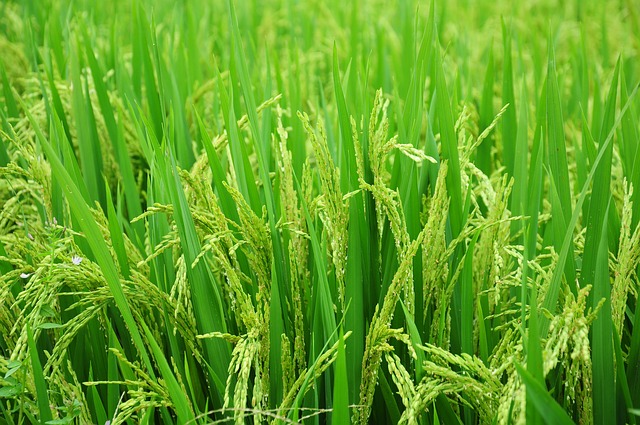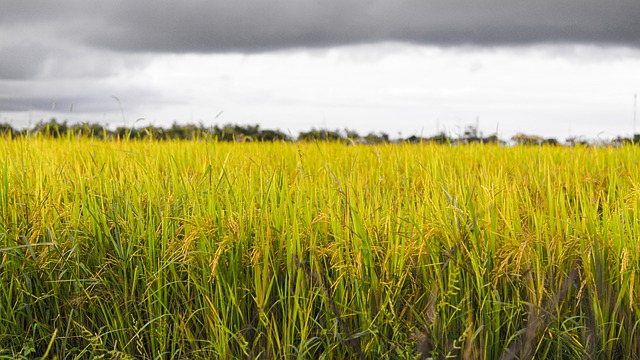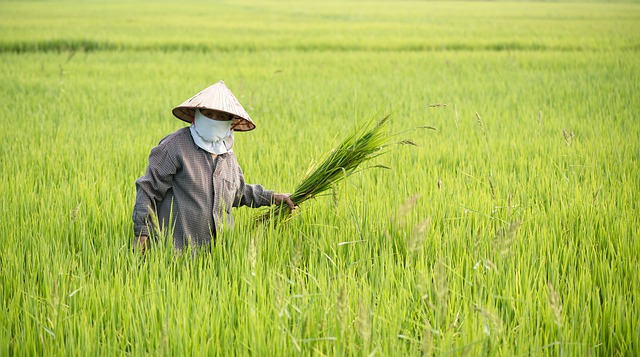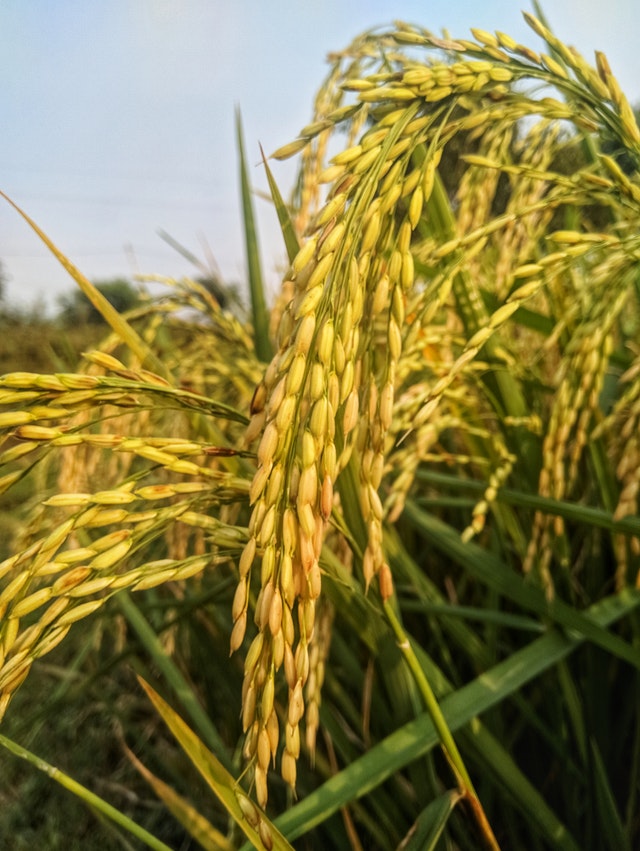Being very useful for climate rice farming of India, it is known as the oldest crop of this country. Paddy is the main food grain of this country. The economy of this country is mainly dependent on the production of rice. With the increasing population in the country, the amount of cultivable land is decreasing. The main reasons for that are the construction of new buildings, roads, malls, markets, education, and industrial establishments, etc. It has a drought, flood, natural disaster with salinity. On the other hand, food demand for the excess population is increasing day by day. Due to the lack of increasing the amount of cultivation land, additional food needs are provided through rice farming in modern ways. The scientific name of rice is Oryza Sativa.
#What Is Rice Farming?
Rice farming is the method of cultivating paddy grains in the field for many purposes. One of the big reasons for cultivating paddy is increasing food and economical development. It is a very laborious and water-intensive task. For this farming, the farmers need different kinds of methods and labor for different steps. It needs to follow special farming guides to cultivating paddy.

#Types of Rice Farming:
We can divide rice farming depending on the season in India. There are three types of paddy cultivation seasons that can produce various types of rice. Let’s know the types of paddy farming in the Indian climate:
1. Autumn Seasonal Paddy:
Paddy or rice plant can be planted in two ways in this season. The appropriate time to sow the seeds of paddy is the summertime. The hybrid rice varieties are BR 21, BR 24, BRRY Rice 27, Brake Rice 42 and Brake Rice 43, BR 26, BRRI paddy 27, brake rice 48, and brass rice 55 those can be cultivated at this season.
2. Aman Seasonal Paddy:
December to January months is mainly called aman season and it is the perfect time for paddy cultivation. It is important to consider light sensitivity and caste selection during this season. In aman season the cultivating rice is British 37, Brake Rice 38, BR 10, BR 11, BRRI 31, BR 25, BRIP RI 32, BRRI 33, and British 39, etc. Those are the most suitable varieties of breeding at this condition.
3. Boro Seasonal Paddy:
There is no light sensitivity in the boro season varieties. This season starts with cold and small days. Therefore, the light-sensitive variety is not cultivable in the Boro season. In the Boro season, in advance varieties of cultivation are BR1, BR 6, BRRI Rice 28, Brake Rice 45, and BRRI Rice 55. And also BR 14, BR 16, BRRI Rice 29, Brake Rice 59, BRRI 60, and BRRI Hybrid Rice 1.

#Rice Farming Guides:
1. Collecting Seeds:
At first, take clean water and mix urea fertilizer in it. Then shake seeds with that water. Nourished seeds will be submitted down to drowning and floating above malnourished and light seeds. Floating seeds will be removed with hands or shipment. Heavy seeds have to be washed away from the bottom 3-4 times in clean water. Urea mixed water can be used in seed fertilizer. Loamy and Sticky soil is good for seed breeding. If the land is barren, organic fertilizers can be mixed at 2 kg per square meter.
If the water logging is delayed in the previous crop or for some reason, if the implementation of land for other reasons is delayed in the field of land for rice plant planting, but instead of using higher age seeds, paddy planting rice plantation is a good technology. In this place, the seedlings of rice seeds are temporarily planted in other lands.
2. Fertilizer Management:
Different stages of rice plant need different levels of nitrogen or urea fertilizer. When applying urea fertilizers at the beginning of the newly grown plants and increases the number of effective new plants by taking the necessary nitrogen from it. From the highest newly grown plant production, the number of nutrients increases every spread of nitrogen. Other fertilizers except for urea, such as TSP, potassium, Gypsum, Zinc sulfate, will be mixed with the soil by plowing to spray the last stage of land making for cultivating. If it is possible to use organic fertilizers, they will be mixed in the soil during the first cultivation.
3. Weed Management:
Weed is the fatal enemy of crops production and the inadequate plant in crops. It is competing with crops and takes a share of sunlight, water, food ingredients, and damages the crops. To reduce weed at the paddy field the farmers can use weed killer. For that, the farmers need to make necessary arrangements with the agricultural workers.
4. Irrigation and Water Management:
Farmers must ensure the proper water supply in rice cultivation. Studies have found that there is no need to keep the water in the field of rice. After planting rice seeds, water should be kept for 10-12 days in the land so that the new roots can easily grow in the planted seedlings and after that keep less water in the field. If the paddy crops are in a drought, then there is a need for supplementary irrigation. In the Boro season, irrigation was normally irrigated in the field. Use PVC or plastic pipes to prevent the waste of water and misuse of water.
5. Insects’ Management:
Due to intensive cultivation, the outbreak and attack of insects are increasing. The ways to stop or control different insects in different seasons are described here. The insects that spoiled the paddy fields are Stem borer, Gall midge, Rice hispa, Leaf roller, Rice caseworm, Swarming caterpillar, Grasshopper, Long-horned cricket, Green leafhopper, Brown planthopper, White-backed plant hopper, Mealybug, Thrips, Rice bug, Ear-cutting caterpillar, Rat, etc. To control them the farmers should follow some important tasks. After sowing the seeds all time observe the field, collect the eggs of insects and spoil them, use birds to reduce insects, use fertilizer to manage the destroyer insects.
6. Disease Management:
Due to intensive cultivation, various types of diseases and pests in rice crops are increasing. Different diseases-pest damage and reduces production. For this, the farmers will have to take the management of the disease.
Tungro – Tungro is the Virus diseases Carriers of disease at green leafing. The disease may occur from the seed condition. The leaves of trees are yellow or orange in scattered in rice fields. Use proper fertilizer for that and take tips from the experts.
Bacterial blight- In 15-20 days of seed plantation and the disease is seen in the older rice plant. The infected sapling is rotated in the tree; the leaves are neglected and died of yellow. Use proper fertilizer for that and take tips from the experts.
Ufra- Ufra rice worms disease. Worms attacked the paddy leaves and open leaves in the paddy. Due to the absorption of worm tree juice, hotter leaves can be seen in white spots. In the crimination, he became brown in the brown color and died. If the incidence of attack is more, there is a reduction in the tree.
Brown spot- This is a fungal disease. This disease is seen in small brown spots on the page first. The middle of the spots is light brown color. There is a lot of yellow bunch around the spots. Apply organic fertilizer in the land. Use fertilizer at balanced levels. In phases, irrigate water on the ground and dry the land.
7. Harvesting and Preserve:
Harvesting is very important so that the farmers need take care of it. They should cut the plants after proper ripe of crops. After cutting, it should be threshed as soon as possible without leaving the rice field. Spread the paddy, sack, or polythene while throwing rice on the raw drum. Thus, the color of rice is bright and clean if the rice is threshed in the proper time. The farmers need to store it in moisture-resistor warehouses.

#Advantages:
1. Both grain and straw yields:
In this farming method, the farmers can get both grains and straw. Gains are used for the livelihood of humans and other animals. Besides straw is used in various tasks and is also the main food of some domestic animals.
2. Lesser chemical inputs:
For rice crops production the farmers need to use fewer fertilizers and chemicals in the fields. This farming method is closely related to organic farming methods so farmers use organic fertilizers for production.
3. Reduced duration:
One of the best advantages of rice farming is reducing the crops production time. In a short time, the rice farming method produces high-quality and quantity crops.
4. Soil health improves:
With less use of chemicals and fertilizer, the soil health improves and provides better production than other farming.
5. Less water requirement:
For this farming method, the farmers need less water in crops production. For that, they can easily produce crops in fewer amounts.

#Reasons of Improving Rice Farming In Japan:
In Japan, rice is the main crop for eating habits. For a long time, ago paddy was cultivated here and it is one of the sources of economical development of that country. Below are some primary reasons for improving rice farming in Japan:
1. Favorable climate:
The climate in Japan is very much favorable to produce good quantity and quality paddy crops of that land. The rainwater and the temperature of that country help to produce rice.
2. Fertile Soil:
As we all know that soil is very important for paddy farming. The interesting fact in Japan is that the soil of that land is very favorable and farmers don’t need to use extra fertilizer for more production.
3. Broad flat geology:
The abundance of agricultural land in the vast flat flood and delta plain is ideal for rice cultivation. And we know that Japan has broad flat geology that gives it extra favorable.
4. The abundance of cheap and efficient workers:
In Japan, there is an abundance of cheap and efficient workers. The Japanese are skilled in the cultivation of rice since ancient times. As a result, there is an adequate number of experienced and skilled workers in rice cultivation all year round.
5. Extensive demand for rice:
There are huge demands for rice in the Japanese market as it is the main food of that country person. For this reason, rice farming in Japan develops here.
6. Modern Agriculture Technology:
In the 1960s, it is possible to increase the yield of cultivating rice by Green Revolution. Commercial rice production practice increases by using organized irrigation, HYV paddy, chemical fertilizer, enhanced equipment.
